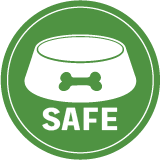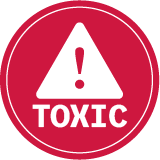Tubs, Treats, and Tantrums — Conquering Bath Time Blues
Bath time does not have to be a battlefield. With the right tools, approach, and a good dose of patience, you can turn your dog's bath from a horror show into a spa day.

STORY AT-A-GLANCE
- Many dogs dread bath time due to fear, overstimulation, or past trauma. Understanding their stress triggers is the first step toward creating a gentler, more manageable bathing experience
- Proper preparation — gathering tools, selecting the right environment, and using non-slip mats — helps reduce stress, making the bathing process safer, smoother, and less intimidating for both pet and guardian
- Following a clear, step-by-step routine — including ear protection, correct water temperature, thorough rinsing, and positive reinforcement — ensures comfort and promotes healthy skin, coat, and trust
- Dogs with allergies, medical issues, or behavioral sensitivities can benefit from tailored bathing techniques, which may range from hypoallergenic products to calming methods like desensitization, distractions, and low-sensory setups
- When home bathing proves too stressful or difficult, professional groomers with low-stress handling expertise can provide a compassionate alternative that supports both hygiene and emotional well-being
For many devoted pet guardians, the mere mention of "bath time" can send their dog into hiding behind the couch or under the bed, or into a panicked frenzy of avoidance. While some dogs seem to tolerate bathing with dignified indifference, or even mild enjoyment, many others exhibit strong resistance, fear, or outright defiance. Whether you share your home with a small dog who loathes getting wet or a large breed who turns into a flailing, muddy missile at the sight of the bathtub, you are not alone in your struggles.
Bathing is a fundamental component of canine hygiene and overall well-being, but for some pet parents, it can feel more like a battleground than a bonding experience. Fortunately, with appropriate preparation, tools, understanding, and a commitment to gentle handling, bath time can be transformed from a dreaded chore into a manageable, even rewarding, routine.
Why Do Dogs Dislike Baths?
Before attempting to modify your dog's behavior or routine, it is important to understand the underlying reasons many dogs find bathing distressing. Dogs do not naturally associate water and bathing with cleanliness or comfort the way humans do. Instead, they interpret the experience through the lens of sensory input, body awareness, and prior experiences. Several common reasons why some dogs hate bath time include:1,2
- Feeling trapped or confined — The loss of control, combined with unfamiliar sensations, can be overwhelming for them.
- Having an unpleasant first experience with bath time — For example, if your pet got scalded with hot water or had the discomfort of water in their ears during their first bath experience, the resulting trauma can create long-term anxiety.
- Exposure to unfamiliar stimuli — Rushing water, a slippery tub, and strong-smelling shampoos can be deeply overstimulating.
- Lack of early conditioning — Puppies who are not gradually and positively exposed to water, bathing tools, and gentle restraint may never develop a positive, or even neutral, association with bathing.
Recognizing that your dog's bath-time behavior is driven by fear, confusion, or past discomfort allows you to respond with empathy rather than frustration.
Preparation Is Key to Success
Like many aspects of dog care, a successful bath begins before the first drop of water even touches your dog's fur. Preparing yourself and the bathing area in advance can significantly reduce stress for all involved. Before bringing your dog into the bathing area, be sure to have the following items close at hand:3
- Dog-safe shampoo and conditioner
- A large, absorbent towel or two
- Non-slip bathmat or towel for secure footing
- A cup or sprayer attachment for controlled rinsing
- Cotton balls or a bathing earmuff (to protect ears from water)
- Dog brush or comb and a pet-safe detangling spray (if applicable)
- A blow dryer with low-heat setting
- Treats and/or lick mat for distraction and positive reinforcement
Having all supplies in place ensures you can focus fully on your dog and proceed through the bath efficiently, minimizing stress and risk of injury.
Choosing the Right Bathing Environment
The ideal setting for your dog's bath depends on your dog's size, age, coat type, and temperament. For small dogs and puppies, the kitchen sink or laundry tub is ideal, as they help reduce back strain for you and provide a more controlled, enclosed environment for your dog. However, remember that puppies under eight weeks of age should not be bathed yet, as they cannot regulate their body temperatures well.
For medium to large dogs, a standard bathtub or walk-in shower is preferable, as it provides more space for the two of you and does not involve significant lifting. Be sure to use a drain cover to catch loose fur and prevent clogging.
If your dog is heavily-soiled, an outdoor hose can be useful especially during warmer months. However, always check the water temperature before use and ensure the bathing area is secure to prevent escape.
Many pet supply stores now offer self-service bathing facilities equipped with tubs, sprayers, shampoo, and dryers. These stations can provide a middle ground between home bathing and professional grooming.4
The Bathing Process — A Step-by-Step Guide
Once your pet and the bath area are prepared, it is time to proceed with bathing. Here is a step-by-step guide you can follow:5
- Brush before bathing — Thoroughly brush your dog to remove tangles, mats, and debris. Wetting matted fur will worsen the tangling and can trap moisture against the skin, leading to hot spots or infections.
- Protect the ears — Gently insert a cotton ball into each ear canal to prevent water from entering. Moisture in the ears increases the risk of painful infections. An alternative to cotton balls is a pet grooming earmuff; this ear-band covers the ears during bathing to protect the ear canals from moisture.
- Ensure that the water temperature is just right — Use lukewarm water — neither hot nor cold. Canine skin is thinner and more sensitive than human skin, and extreme temperatures can cause panic or harm.
- Wet the coat gradually — Begin by wetting your dog's back and shoulders, then move to the chest, legs, belly, and tail. Avoid soaking the face or ears directly. Use a washcloth for delicate areas.
- Apply shampoo with care — Use a shampoo that is specifically formulated for dogs and apply it in a methodical order. Begin at the top of the head (avoiding eyes), then move down to the neck, chest, legs, body, and finally the rear end. This approach helps prevent bacterial contamination from anal or genital areas from being spread across the rest of the coat.
- Rinse thoroughly — Rinse the coat a minimum of twice and as many times as needed for the rinse water to run clear. Shampoo residue is a leading cause of post-bath itching and skin irritation. Three to five rinses may be necessary for thick or long coats.
- Apply conditioner (if needed) — Use a dog-safe conditioner and rinse thoroughly to prevent residue buildup.
- Dry completely — Use an absorbent towel to remove most of the moisture. Then use a dog blow dryer on a low or cool setting. Dry in sections to avoid chilling or overheating your dog and to prevent matting.
- Final brush — Once your dog is fully dry, brush the coat again to prevent tangling and stimulate healthy skin circulation.
- Reward your pet generously — Give your dog praise and treats during the bath and playtime after the bath. Positive reinforcement strengthens your dog's tolerance for future baths.
Bathing Dogs with Unique Needs
Not all dogs can be bathed using a standard method. Some require special products or alternative handling methods due to health concerns, coat type, or behavioral issues. For example, white-coated dogs are prone to staining and dullness. You can use dog-safe whitening shampoos but only sparingly.
For dogs with allergies, skin infection, or other skin conditions, hypoallergenic or medicated shampoos may be recommended by your veterinarian. Allow the lather of the medicated or therapeutic shampoo to sit for 10 minutes before rinsing to maximize its therapeutic effect.
Dogs that have recently undergone surgery need to rest and heal and can be bathed generally 10 to 14 days after their surgery, unless otherwise advised by a veterinarian. If your pet has been skunked, you may need to find a specialized de-skunking shampoo to completely remove the odor. An alternative is to make a homemade mixture of hydrogen peroxide, baking soda, and dish soap. Rinse thoroughly and, very importantly, avoid contact with the eyes.
Managing Fearful and Resistant Dogs
For dogs who exhibit extreme fear or resistance, behavioral management techniques are essential. Patience, repetition, and sensitivity can help your dog gradually overcome their bath-time anxiety.
- Create a calm environment — If able, exercise your pet well before the bath to help them burn off excess energy. Minimize external noise, activity, and stress leading up to and during the bath. Use a soothing voice, dim lighting, and gentle handling. Consider soft music or calming pheromone sprays to create a tranquil atmosphere. In particular, consider playing classical music. Music at 60 beats per minute has been shown in studies to be particularly calming to both people and animals.
- Use non-slip traction — Place a rubber mat, towel, or traction pad in the tub to prevent slipping. Secure footing reduces panic and increases your dog’s sense of safety. Furthermore, secure footing reduces the chances for injury during bathing.
- Limit sensory overload — Avoid using strongly scented shampoos. Keep water pressure low and use a cup instead of a sprayer if needed. Keep the water comfortably tepid. Pause frequently to check your dog’s comfort level.
- Consider gradual desensitization — Desensitization involves exposing your dog to the bath environment in small, positive steps, such as:
- Let them enter the bathroom so they can receive a treat.
- Ask them to step into a dry tub and receive a treat.
- Hear running water (without getting wet) and receive a treat.
- Use distraction tools like lick mats and frozen treats — These will redirect your dog's focus. Furthermore, the act of licking at a mat or treat actually helps your dog to release serotonin and other feel-good endorphins. This can help to associate bath time with feeling happy.
When to Seek Professional Grooming
If bath time remains an ongoing struggle despite your best efforts, consider seeking help from a professional groomer who has been specially trained in fear-free or low-stress handling techniques.
Professional groomers have experience working with a wide range of breeds, coat types, and temperaments. They have access to equipment that allows for faster, more effective, and safer bathing.
A knowledgeable groomer can be a valuable partner in your dog's care routine, offering not only cleanliness and comfort, but also education and peace of mind.
Make Your Bath Time a Bonding Experience
Transforming bath time from a chaotic ordeal into a positive ritual is both possible and worthwhile. Through preparation, patience, and consistent positive reinforcement, most dogs can learn to tolerate — and even enjoy — bathing.
In time, your dog might not just tolerate baths, they might look forward to them. And at the very least, you will both come away from the experience dry, clean, and a little closer.
If you are struggling, do not hesitate to reach out to your veterinarian, a qualified dog trainer, or a professional groomer. You are not alone — and your efforts to create a better bathing experience are a beautiful act of care and connection.










